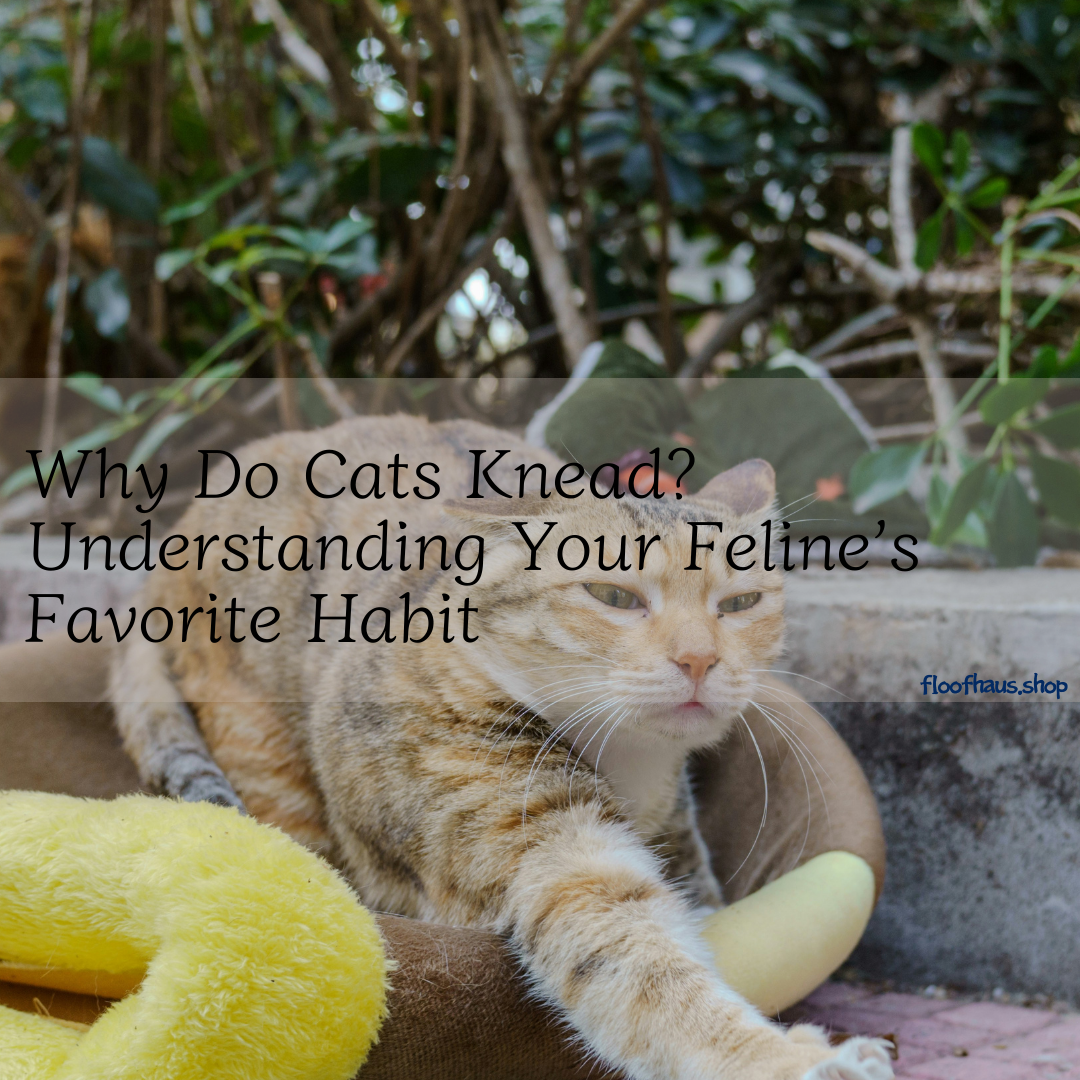
Why Do Cats Knead? Understanding Your Feline’s Favorite Habit
Share

What Is Kneading?
Kneading is a repetitive motion where cats push their paws in and out against soft surfaces. Sometimes called “making biscuits,” it’s a natural behavior stemming from kittenhood. Kittens knead their mother’s belly to stimulate milk flow, and many adult cats retain this habit as a sign of comfort and security.
While it may seem silly or inconvenient when they knead your furniture, it’s actually a form of communication and self-expression.
Why Cats Knead
Understanding why cats knead requires looking at both instinctual and emotional factors.
1. Comfort and Security
Kneading often occurs when a cat is relaxed or settling in for a nap. Pressing paws into soft surfaces releases endorphins, which help your cat feel calm and happy.
2. Marking Territory
Cats have scent glands in their paws. When they knead, they leave their scent behind, marking their territory. This is why you may notice your cat kneading your bed, blanket, or favorite chair.
3. Expressing Affection
Cats may knead on their humans to show love and trust. This behavior signals that they feel safe around you and consider you part of their social circle.
4. Stretching Muscles and Staying Healthy
Kneading is also a form of exercise. Pushing paws in and out helps stretch the muscles in the legs, shoulders, and paws, keeping your cat agile and fit.
5. Stress Relief
Just like humans have stress-relieving habits, cats knead to manage tension. If your cat is anxious, kneading can be soothing and help them calm down.
When Kneading Can Signal Health Issues
While kneading is usually harmless, certain patterns may warrant attention:
- Excessive kneading with claws extended – could cause injury to surfaces or humans. Consider trimming nails.
- Kneading combined with biting or scratching – may indicate anxiety or overstimulation.
- Kneading in unusual locations or obsessively – could suggest discomfort or a health problem, especially if paired with changes in appetite or litter box habits.
If you notice sudden changes in your cat’s kneading behavior, a check-up with the vet is a good idea.
How to Encourage or Manage Kneading
1. Provide Soft Surfaces
Cats prefer soft, comfortable materials for kneading. Blankets, pillows, or cat beds are ideal.
2. Protect Furniture
If your cat kneads on your sofa or chair, use protective covers or place a favorite blanket over the area.
3. Trim Claws
Regular nail trimming can prevent scratches while still allowing your cat to knead safely.
4. Offer Toys and Scratchers
Kneading and scratching are related behaviors. Providing scratching posts and interactive toys can help manage energy and prevent damage to furniture.
5. Reward Calm Kneading
When your cat kneads gently, offer affection, treats, or verbal praise. This reinforces positive interactions and strengthens your bond.
At Floofhaus, We Celebrate Every Knead
At Floofhaus, we understand that kneading is a sign of comfort, love, and wellbeing. That’s why we offer products designed to make your cat’s kneading experience safe and enjoyable:
- Soft, plush beds and blankets – perfect surfaces for kneading.
- Cat-friendly furniture protectors – keep your favorite sofa intact.
- Interactive toys and scratchers – encourage natural behaviors.
- Nail care kits – for safe and stress-free trimming.
With Floofhaus, you can create an environment where your cat feels secure, happy, and loved — making every knead a moment to cherish.
Conclusion
So, what is the reason behind cats kneading? From instinctual behavior as kittens to expressing comfort, affection, and even marking territory, kneading is a meaningful part of your cat’s life. By understanding this habit and providing safe outlets, you can strengthen your bond, support their health, and enjoy these adorable moments together.
Sources
American Society for the Prevention of Cruelty to Animals (ASPCA) – Cat Behavior
Cornell University College of Veterinary Medicine – Feline Behavior
PetMD – Why Cats Knead
Jackson Galaxy – Understanding Cat Habits
